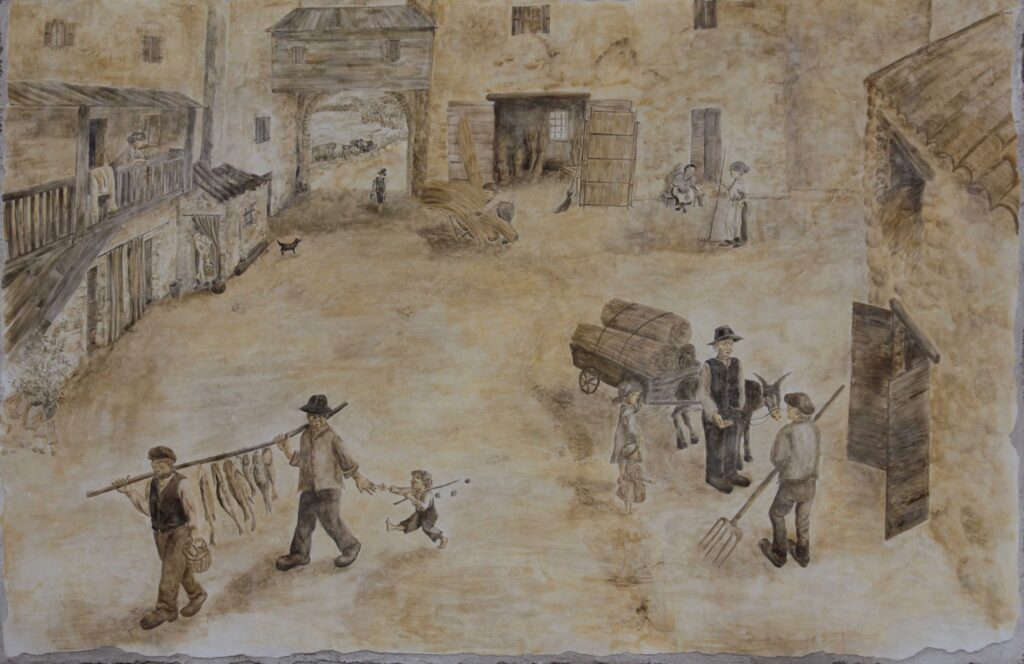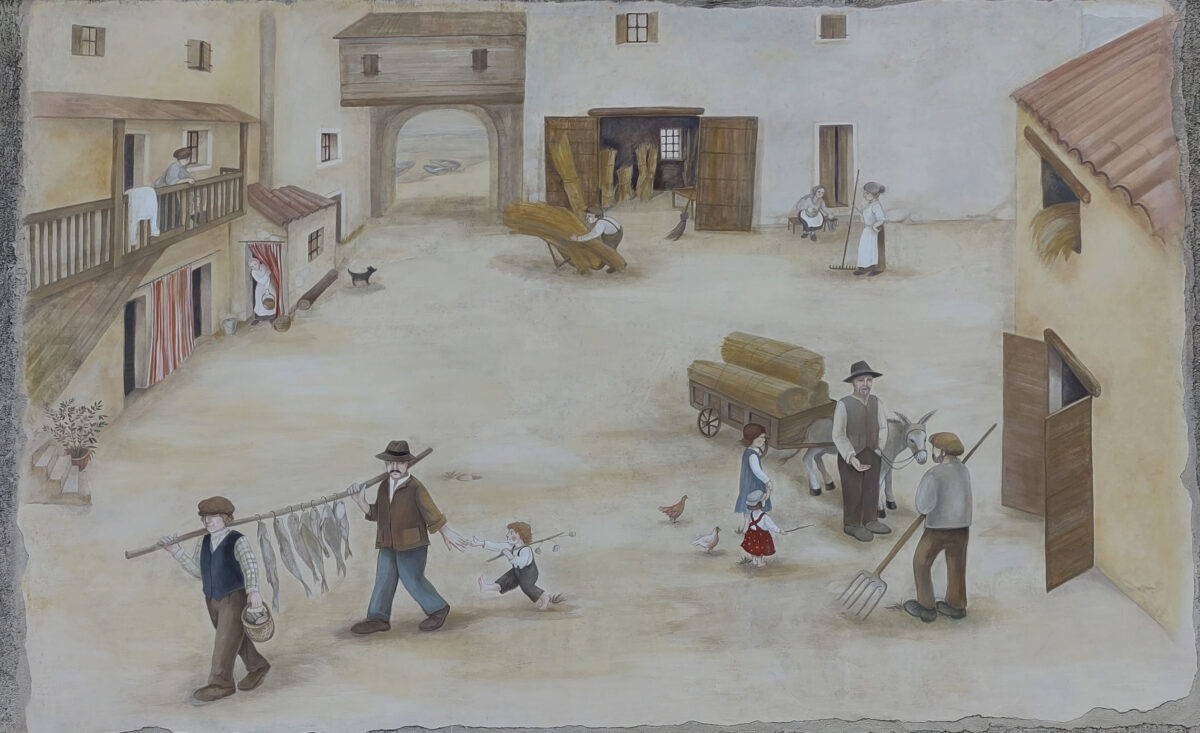Ubicazione: Fratta, 113 – Casa De Polo – Finestra dea Pasqua
Il murales, progettato e realizzato dall’artista Chiara Piccin nel 2009, nel tempo ha perso i suoi colori originari. Nel 2023 è stato rielaborato da Mariateresa Casagrande
Qui sotto il Murales del 2009

Particolari del murales dopo la rielaborazione
 AL CORTIVO DE FRATTA
AL CORTIVO DE FRATTA
Ubicazione: Fratta – Casa De Polo – Finestra dea Pasqua
Autore iniziale: Chiara Piccin
Rielaborazione a cura di Mariateresa Casagrande
Anno realizzazione: 2009
Anno rielaborazione: 2023
Tecnica: La versione originale era un affresco la rielaborazione è stata fatta con pittura murale e silicati
L’affresco rappresenta un cortile rurale nel borgo di Fratta, con tutti i personaggi che lo caratterizzavano e, in primo piano, i mestieri legati a quello che la natura offriva: il lavoro di pesca e commercio del pesce di lago, la raccolta dei canneti per la produzione di “grisioe”, ovvero dei graticci, che venivano usati nell’edilizia o per l’allevamento del baco da seta nelle case.
AT THE COURTYARD IN FRATTA
Location: Fratta – De Polo House – Easter Window
Author: Chiara Piccin
Autor of Reworking: Mariateresa Casagrande
Year of completion: 2009
Reworking: 2023
Technique: Fresco Reworking with wall painting with silicate
The fresco represents a rural courtyard in the hamlet of Fratta and all the figures that used to characterize it. In the foreground one can see some jobs, tied to what nature had to offer: fishing, fish selling and reed harvesting. The reeds were used to make the “grisioe”, that is trellises, but also for house building and sericulture.
AL CORTIVO DE FRATTA
Standort: Fratta – Haus De Polo – Osterfenster
Autor: Chiara Piccin
Überarbeitung: Mariateresa Casagrande
Jahr: 2009
Überarbeitung: 2023
Technik: Fresko – Überarbeitung mit Wandmalerei mit Silikatfarbe
Das Fresko zeigt einen bäuerlichen Hof des Dorfes Fratta mit allen charakteristischen Figuren und im Vordergrund die mit der Natur verbundenen Berufe: die Fischerei und der Handel mit Seefischen, die Ernte des Schilfs für die Herstellung von “grisioe”, d.h. Spalieren, die für den Bau oder die Seidenraupenzucht in den Häusern verwendet wurden.



